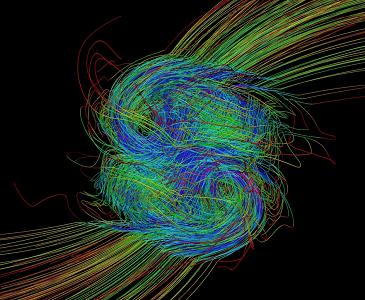 |
|
Astrophysical and Planetary Sciences Colloquium
Monday, February 12, 2018 at 4:00 PM JILA Auditorium James Guillochon, Harvard-Smithsonian Center for Astrophysics "If you want to learn about physics, watch a black hole consume a star!"  Abstract:The region within a few gravitational radii of a supermassive black hole is one of nature's most extreme environments: gravity, magnetism, radiation, and hydrodynamical forces all compete to control the flow of matter that might venture into the black hole's vicinity. While we can learn some things about black holes from a single snapshot of their state, we learn much more when the conditions about a black hole vary. Tidal disruptions represent the most extreme change in state for a black hole, converting what was likely a tepid accretor into a tremendously luminous object. In my talk, I will describe work related to the latest technical advances in tidal disruption modeling, particularly magnetic fields and radiative processes, and discuss how semi-analytical modeling of their light curves is likely to be a fruitful approach for characterizing supermassive black holes and the stars they destroy. I will conclude by discussing the future theoretical projects related to tidal disruptions that we are in the process of conducting over the next few years, and how the results of current and future theoretical work can be effectively compared to the ample observational yields of large-scale surveys such as LSST and ZTF.
|